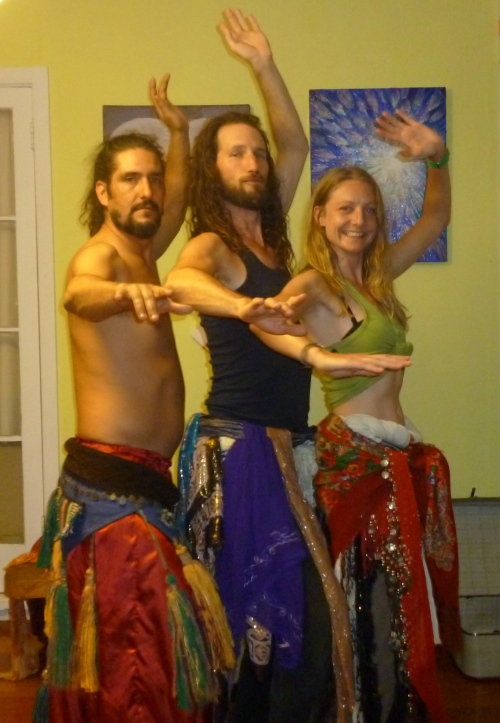‘The great thing about belly dancing,’ said Paul, ‘is that anyone can do it. It’s not exclusive.’ What he didn’t say was that not anyone can belly dance well, but I was up for the challenge and up for another attempt at letting go of my British stiffness.
I had cooked up a bit of a meal to say thanks to a few people for putting me up (and putting up with me) in Raglan, New Zealand. The wine flowed and the conversation turned to dance, its connection with happy hormones and its ability to reconnect you with your body (I’m of the opinion that so many of us are very disconnected from our bodies, but that’s a whole different conversation).
Discussions of national dances from around the world made me contemplate what England brought to the mix and the two distinct forms that stood out were morris dancing and maypole dancing, both dying traditions. Spreading the net a little further, in the UK we have traditional folk dances and Scottish square dances, but it’s only really at weddings and parties that the masses get involved in the likes of ceilidhs and barn dances. And that, more often than not, involves an almighty piss up. Needless to say, it again brought to light the lack of rhythm and flow and technique that we naturally have as a nation, particularly when compared to the likes of South American or African countries.
So here I was in New Zealand, not learning a traditional haka dance but rather trying to shimmy my hips and roll my body to a middle-eastern beat. The style was more tribal belly dance, mixing flamenco with gypsy and more traditional elements. It wasn’t the tassly, sexed up Turkish style or gothic fusion or Tahib that incorporate sticks and martial arts movements, but it was still damn difficult.
‘First of all, show some belly,’ said Paul before opening up a suitcase wardrobe full of shiny, shimmery, jingly costumes. We got dressed up: tying scarves and all sorts around our hips and knotting up our tops. It worked. I felt in character and ready to make a fool of myself. Ready to let go.
‘My teacher told me to feel here,’ he said, pointing to his obliques (or transverse abdominal muscles), ‘and to cough, and the muscle you feel when you cough is the one you want to work with.’ I found it alright. Controlling it to move my hips up and down without moving my legs or upper body was more of a difficulty. But I improved.
A little later, well into the swing of it and switching things up so that we all got a turn to lead the rest of the group, I realised that I was smiling. I couldn’t help it. I felt silly and terribly bad at what I was trying to do, but I felt happy and free.
So many giggles and some new skills to practise. Fun times.
And here’s how it should be done:






Loving it! xx
Pingback: 9 reasons why solo travel is great | travelola
Pingback: 21 things travelling has taught me | travelola
Pingback: 9 reasons why solo travel is great | travelola
Pingback: 9 reasons why solo travel is great | travelola